Have you ever dreamed of flying? Not just flying in an airplane, but truly experiencing the freedom of the skies, with the wind in your face and the world spread out below you? Air sports offer this unique thrill, and they’re not just for daredevils and adrenaline junkies. So, From the serene beauty of hot air ballooning to the heart-pounding excitement of skydiving, air sports are a diverse and accessible way to touch the heavens.
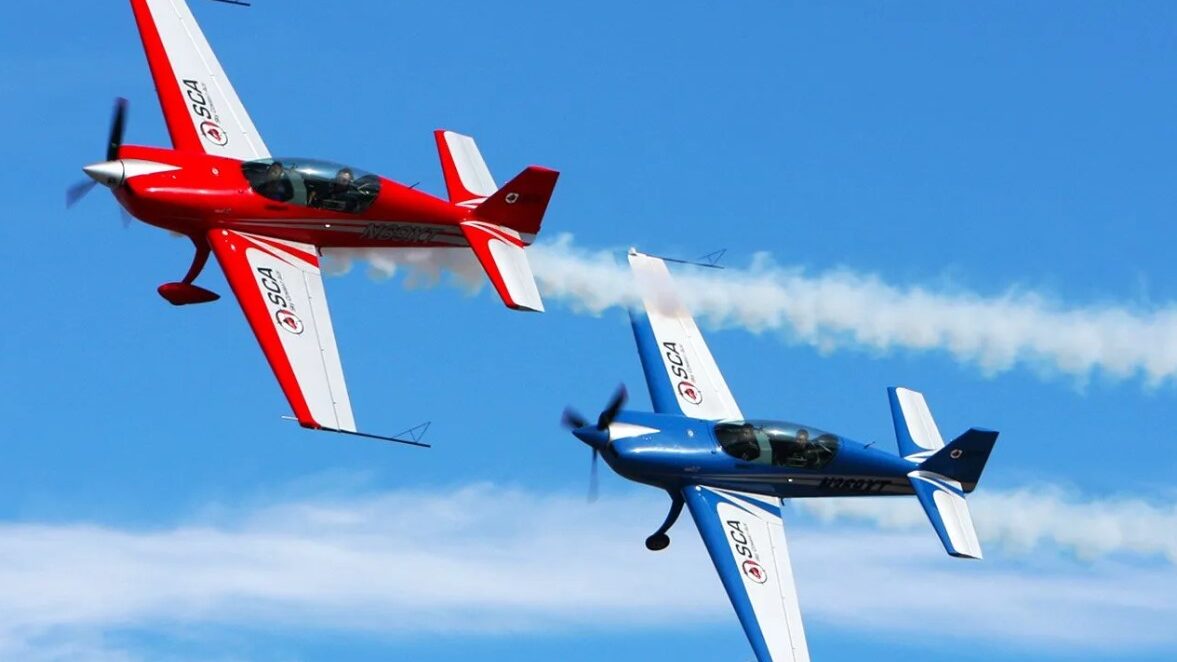
Air sports encompass a variety of activities that take place in the sky, such as parachuting, hang gliding, and skydiving. Furthermore, These sports offer participants thrilling experiences and a sense of freedom, often accompanied by adrenaline rushes.
History of Air Sports
The history of air sports traces back to the early 20th century, marked by the pioneering flights of visionaries like the Wright Brothers and Santos-Dumont. Besides, To regulate the burgeoning aeronautical activities, the Fédération Aéronautique Internationale (FAI) was established in 1905. Since then, technological advancements have spurred the evolution of new air sports disciplines, broadening the FAI’s scope of involvement.
Different Types of Air Sports
Air sports can be divided into three main categories: motorized, wind/gliding, and gravity sports, each offering a unique experience in the sky.
- Motorized Air Sports: These include activities like aerobatics, air racing, drone racing, powered paragliding, and ultralight aviation. Participants in motorized air sports harness the power of engines to navigate the skies with speed and precision.
- Wind/Gliding Air Sports: This category encompasses ballooning, hang gliding, paragliding, and kiteboarding, among others. Accordingly, Participants in wind/gliding air sports rely on natural wind currents to soar through the sky, experiencing a sense of freedom and tranquility.
- Gravity Air Sports: These sports involve activities such as BASE jumping, cliff jumping, skydiving, and wingsuit flying. Furthermore, Gravity air sports enthusiasts experience the exhilarating sensation of freefalling through the air, defying gravity, and pushing the limits of human potential.
Each type of air sport offers a distinct experience, whether it’s the peaceful serenity of gliding, the adrenaline rush of skydiving, or the strategic challenge of air racing. Despite their differences, all air sports share the common element of taking participants into the vast expanse of the skies, offering a perspective and sensation that can’t be found in any other type of sport. Accordingly, If you’re seeking an adventure that will elevate you to new heights, air sports might just be the perfect ticket!
Skydiving for Beginners
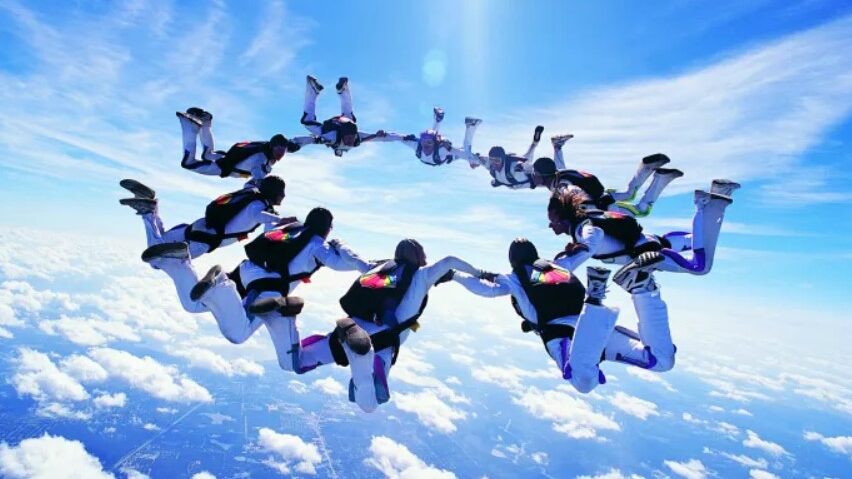
Getting Started with Skydiving
- Find a Drop Zone: Locate a nearby drop zone using resources like the United States Parachute Association (USPA).
- Schedule Your Jump: Contact the drop zone to check their hours and book your skydive.
- Choose Your Jump Type: Beginners typically opt for a tandem jump, where they’re attached to an instructor. Other options include an Accelerated Free Fall (AFF) Level One jump or a static line jump.
Training and Safety Measures
- Equipment: You’ll be provided with top-of-the-line gear, including tested parachutes and automatic activation devices.
- Training: Receive comprehensive instruction covering jump navigation, freefall techniques, and landing procedures.
- Safety Protocols: Strict safety procedures and checks are in place for every jump.
- Weather Checks: Jumps are scheduled based on clear skies and favorable weather conditions.
What to Expect on Your First Jump?
- Mental Preparation: Skydiving requires mental strength. Prepare to enjoy the breathtaking view and the sensation of free-falling.
- The Jump: Experience approximately 40-50 seconds of exhilarating freefall, followed by a peaceful parachute ride lasting several minutes.
- Landing: Your instructor will guide you through the landing process for a safe touchdown.
Skydiving is a safe, controlled activity, so trust in the process despite any anxiety. Have fun on your skydiving trip! With proper training, safety measures, and a sense of adventure, your first skydiving experience is sure to be unforgettable!
The Art of Gliding
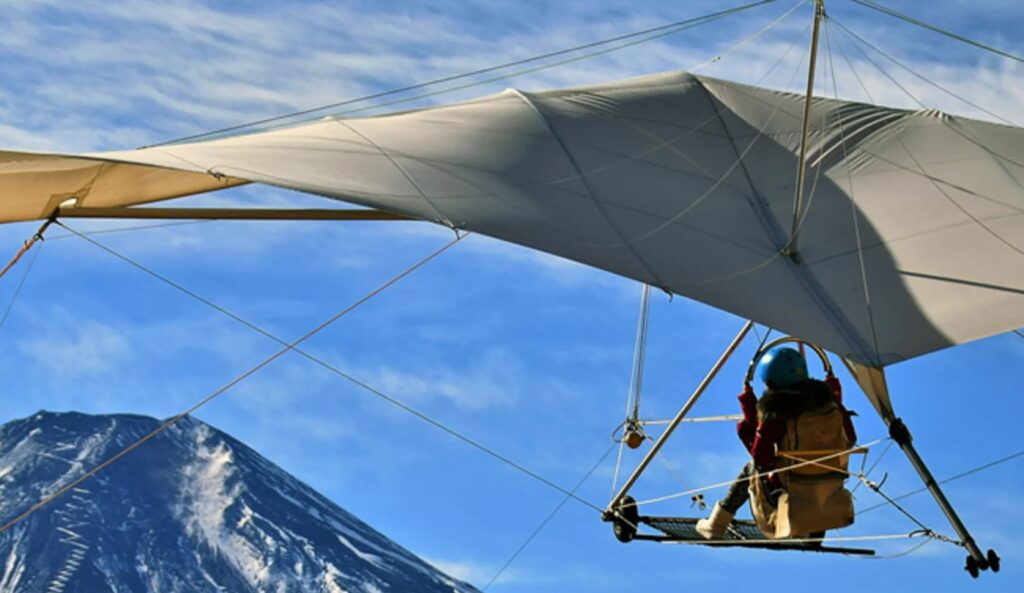
Understanding How Gliders Stay Airborne
Gliders remain in the air by balancing the forces of lift and gravity. In Addition, their wings are meticulously designed to generate enough lift to counteract their weight. As a glider moves through the air, its wings, also known as airfoils, create a pressure difference. Besides, This difference in pressure, with lower pressure above the wing and higher pressure below, generates the lift needed for flight.
Utilizing Natural Phenomena for Extended Flight
Gliders can soar for extended periods by harnessing natural phenomena such as thermals, ridge lift, and wave lift. Furthermore, Thermals are columns of rising warm air, formed by the sun’s uneven heating of the Earth’s surface. Ridge lift occurs when wind encounters a mountain or hill, deflecting upward and providing additional lift. Besides, Wave lift is created by the oscillation of air flowing over a mountain, descending into the trough of a wave.
Experiencing the Silence of Flight
The silent glide of a glider mirrors the stealthy flight of an owl. Glider pilots experience this silence firsthand, soaring through the air without the roar of engines. It’s a serene and surreal experience, allowing pilots to connect with nature and the elements in a unique way.
Competitions and Achievements in Gliding
Gliding competitions test pilots’ skills in navigating set courses or achieving distance, speed, and altitude records. The FAI Gliding Commission oversees world records and competitions, excluding glider aerobatics. Events like the FAI World Gliding Championships attract pilots from around the globe to compete and set new records.
The Magic of Hot Air Ballooning
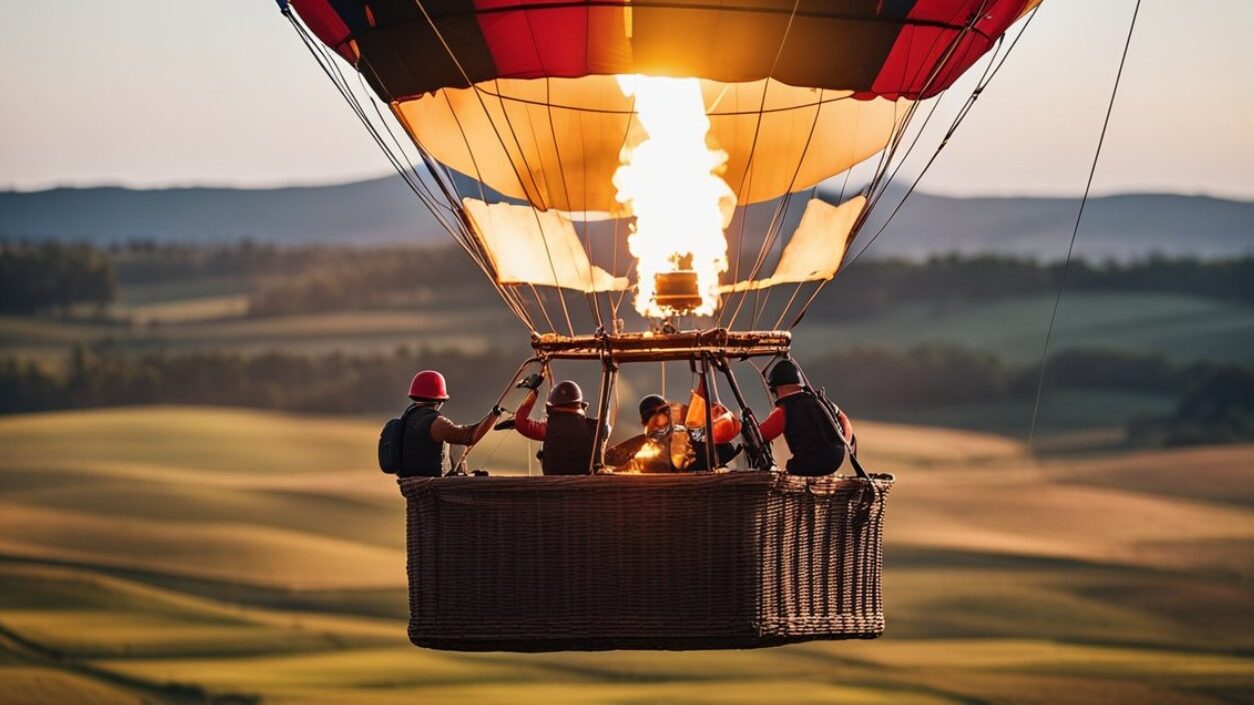
Hot air ballooning boasts a rich history spanning over two centuries, tracing back to the pioneering flights of the Montgolfier brothers over Paris in 1783. However, their initial flight, carrying a sheep, a duck, and a rooster, marked the birth of this remarkable form of flight, with French scientist Pilatre De Rozier leading the way. Since then, hot air ballooning has achieved numerous milestones, including the first human flight, the maiden voyage across the English Channel, and the inaugural flight in North America.
Understanding How Hot Air Balloons Work
Hot air balloons operate on a simple yet ingenious principle: warmer air rises in cooler air. Comprising three main components – the envelope, the burner, and the basket – a balloon takes flight when the burner heats the air inside the envelope. Afterward, As this heated air becomes less dense than the surrounding cooler air, the balloon ascends. Also, Pilots have precise control over altitude and vertical speed by adjusting the heat from the burner.
Celebrating Ballooning Through Festivals and Events
Enthusiasts of hot air ballooning have ample opportunities to come together and revel in the beauty of this airborne marvel at various festivals and events worldwide. Some of the standout gatherings include:
- Albuquerque International Balloon Fiesta: Held in New Mexico, this renowned event stands as the world’s largest balloon festival, boasting hundreds of colorful balloons and a plethora of engaging activities.
- New Jersey Lottery Festival of Ballooning: As the largest summertime hot air balloon festival in North America, this event offers much more than just ballooning, with live concerts, mesmerizing fireworks displays, and even a thrilling 5K run.
- Colorado Springs Labor Day Lift Off: Set against the majestic backdrop of the Rocky Mountains, this vibrant gathering sees over 70 balloons take to the skies, creating a spectacular sight for all to behold.
These festivals provide a fantastic opportunity for enthusiasts and families alike to soak in the magic of hot air ballooning, whether by witnessing the majestic spectacle of balloons in flight or even taking a memorable ride in one. So, It’s an experience that promises wonder and delight for all who attend.
Kitesurfing and Hang Gliding
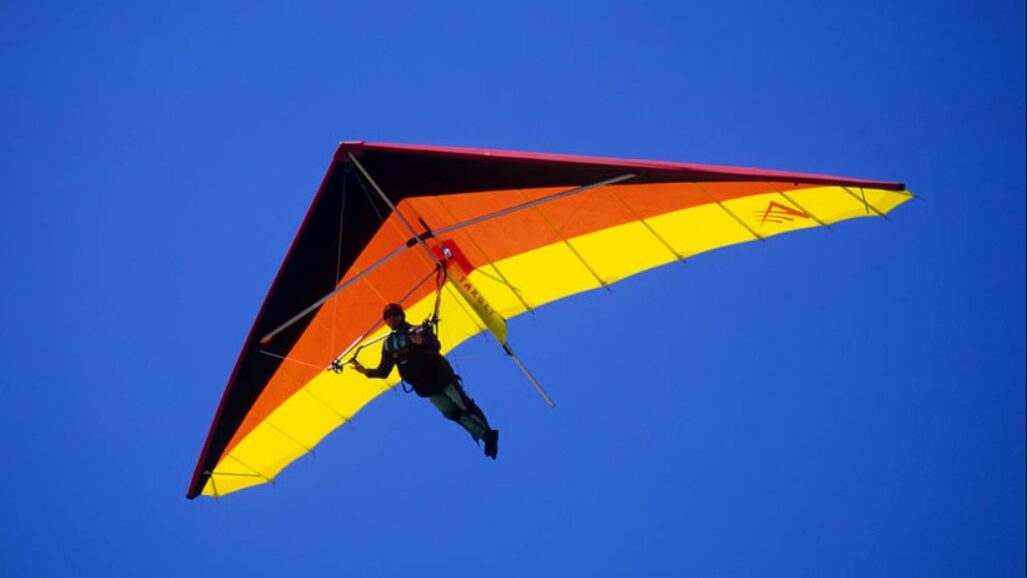
Kitesurfing, also known as kiteboarding, blends elements of surfing, windsurfing, and paragliding. Additionally, It involves riding on a board while being propelled by a large kite controlled by a bar. Here, The excitement of kitesurfing lies in harnessing wind and waves to perform jumps and tricks, blending the thrill of surfing with the sensation of flight.
Safety Tips for Kitesurfing
- Always take lessons from a certified instructor.
- Check weather conditions before heading out.
- Use the appropriate kite size for wind conditions.
- Wear protective gear like a helmet, impact vest, and harness.
- Respect other water users and adhere to local regulations.
Hang Gliding
Hang gliding is an air sport where participants fly a lightweight, non-motorized foot-launched aircraft known as a hang glider. Unlike kitesurfing, hang gliding is closer to traditional flight, as you soar through the air, often at higher altitudes, using thermal currents to stay aloft.
Safety Tips for Hang Gliding
- Begin with tandem flights alongside an experienced pilot.
- Learn from a certified hang gliding school.
- Always conduct a thorough pre-flight check of your equipment.
- Wear appropriate safety gear, including a helmet and harness.
- Stay informed about weather conditions and air traffic regulations.
Learning Curves
Both sports come with their learning curves. However, Kitesurfing requires mastering kite control and board skills, while hang gliding demands an understanding of aerodynamics and weather patterns. Regardless of the sport, proper training and adherence to safety protocols are crucial to enjoying these thrilling activities responsibly.
Air Sports as a Spectator
Popular Air Sports Events Around the World
Air sports events around the world attract enthusiasts and spectators alike, offering thrilling displays of aerial acrobatics and breathtaking feats of skill and daring. Here are some popular air sports events that draw crowds from far and wide:
1. Red Bull Air Race World Championship: This high-speed, low-altitude air racing series features some of the world’s best pilots navigating challenging courses marked by inflatable pylons. The Red Bull Air Race World Championship holds races in iconic locations around the globe, including Abu Dhabi, Budapest, and Indianapolis. These events are a must-see for adrenaline junkies and aviation enthusiasts alike.
2. EAA AirVenture Oshkosh: Known as the “World’s Greatest Aviation Celebration,” EAA AirVenture Oshkosh is an annual gathering of aviation enthusiasts held in Oshkosh, Wisconsin, USA. Therefore, The event features airshows, aerobatic displays, vintage aircraft, experimental aircraft, and more. With over 10,000 aircraft and half a million attendees, AirVenture Oshkosh is one of the largest air shows in the world.
3. Albuquerque International Balloon Fiesta: Held annually in Albuquerque, New Mexico, USA, the Albuquerque International Balloon Fiesta is the largest hot air balloon festival globally. Accordingly, The event showcases hundreds of colorful hot air balloons soaring into the sky. So, They create a stunning spectacle against the backdrop of the scenic New Mexico landscape. Moreover, Visitors can enjoy balloon rides, balloon glow events, and mass ascensions during this nine-day festival.
4. Fédération Aéronautique Internationale (FAI) World Air Games: The World Air Games, organized by the FAI, features a variety of air sports including aerobatics, skydiving, paragliding, and hang gliding. Also, The World Air Games is held every four years in different host cities worldwide. So, It brings together top athletes from across the globe to compete for gold.
5. Paris Air Show: As one of the largest aerospace trade shows in the world, the Paris Air Show attracts industry professionals, aviation enthusiasts, and spectators alike. The event is held biennially near Paris, France. It features static aircraft displays, aerial demonstrations, and showcases of aerospace innovation.
6. International Balloon Festival of Saint-Jean-sur-Richelieu: Located in Quebec, Canada, the International Balloon Festival of Saint-Jean-sur-Richelieu is one of the largest hot air balloon festivals in the country. Moreover, The festival features daily mass ascensions and night glows, as well as fireworks displays. Additionally, attendees can enjoy live music performances, a variety of food vendors, and family-friendly activities.
Understanding the Skills and Risks Involved
Participating in air sports demands a high level of skill and comes with inherent risks. For instance, paragliding has an estimated incident rate of 1.4 deaths and 20 serious injuries per 100,000 flights, making it roughly twice as risky as general aviation and skydiving. Most accidents stem from pilot errors, like control and decision mistakes, rather than equipment malfunctions. So, Safety measures prioritize enhancing glider control skills and promoting the use of reserve parachutes.
The Community and Culture of Air Sports Enthusiasts
The air sports community is vibrant and diverse, uniting enthusiasts who share a love for the thrill and freedom of flight. Moreover, Event organizers and announcers play vital roles in creating captivating experiences for both spectators and participants. Here, Engaging with this community can lead to valuable connections and opportunities for collaboration.
When attending air sports events, appreciate the precision and skill of the athletes while acknowledging the risks they undertake. Also, Immerse yourself in the culture of the community, whether you’re witnessing the action live or tuning in through broadcasts. Indeed, Air sports offer an exhilarating and communal experience for all involved.
Recommended Reads
Fun Facts about Air Sports

- Skydiving: The United States Parachute Association (USPA) records an average of 3.3 million jumps annually, with only 13 skydiving-related fatalities reported in 2019.
- Aeromodelling: This captivating air sport involves building and flying model aircraft, ranging from simple gliders to intricate scale models.
- Ballooning: The Coupe Aeronautique Gordon Bennett stands as the oldest gas balloon race globally, remaining a significant event in the air sports calendar.
- Hang Gliding: Hang gliders can soar to altitudes exceeding 4,000 meters, surpassing the heights of some of the tallest peaks in the Alps.
- Paragliding: Paragliders can stay airborne for hours and cover hundreds of kilometers, utilizing thermal currents to gain altitude.
- Air Racing: Air racing entails competing in aircraft on fixed courses, offering one of the most thrilling spectacles in air sports. The Reno Air Races, known as the “world’s fastest motorsport,” are a renowned example.
These facts showcase the diversity and excitement of air sports, blending technology, skill, and adventure to captivate enthusiasts worldwide. Whether you’re watching from the ground or soaring through the skies, air sports offer a unique and exhilarating experience.
Final Words
Air sports provide an opportunity to challenge oneself, get away from the every day, and see the world from a fresh angle. Moreover, The possibilities are endless, whether you’re seeking a brand-new hobby or you simply want to know more about these amazing sports. Why not broaden your mind and delve into the exciting area of aerial sports?
FAQ’s
A category of enjoyable and competitive airborne activities known as “air sports” usually involves aircraft or flying devices like hang gliders, parachutes, or hot air balloons.
Aviation sports include recreational and competitive activities involving aircraft and flying. It encompasses disciplines like aerobatics, air racing, ballooning, gliding, parachuting, and more. That’s why, Participants engage in leisurely flights or competitive events, demonstrating their skills and passion for aviation.
The term “airball” is commonly linked with basketball, describing a shot that misses the basket, rim, and backboard entirely. However, there’s a distinct sport called Airball, devised by S. Rogers from Australia in August 2014. Airball mirrors volleyball, focusing on keeping the ball airborne over a net. It’s played on a circular court measuring 16 meters in diameter. While “airball” in basketball isn’t a sport, the term is associated with a unique sport called Airball.
The world’s most popular sports, based on their estimated global fan base, are as follows:
Soccer (Association Football): With approximately 4 billion fans, soccer is the most widely enjoyed sport worldwide, with enthusiasts in every corner of the globe.
Cricket: Cricket boasts around 2.5 billion followers, particularly in regions such as the UK, Africa, Asia, America, and Australia.

